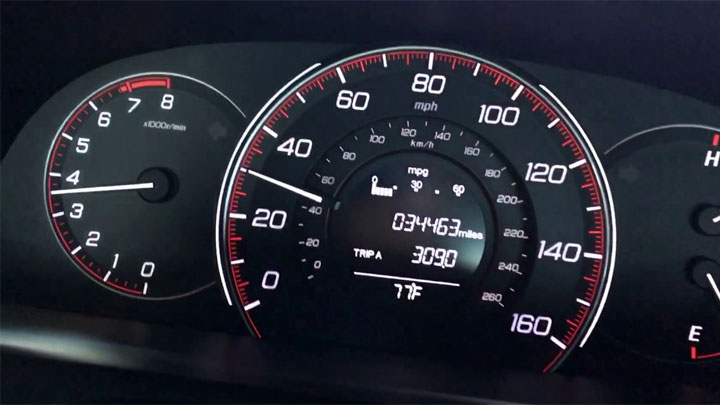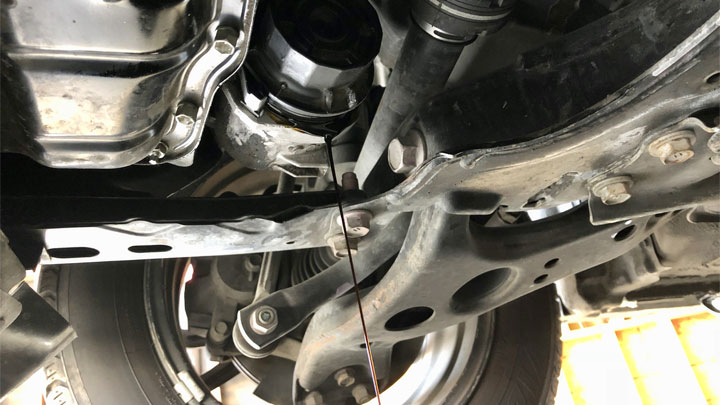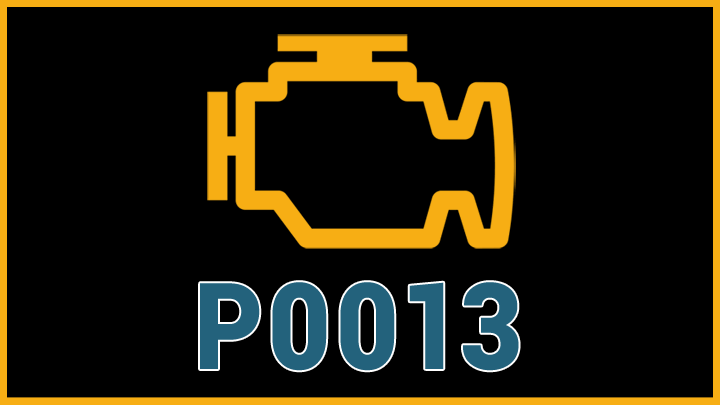Last Updated on August 1, 2022
Once you’ve read your check engine light using an OBD2 scanner or diagnostic tool, you’ll get a letter and string of numbers that don’t mean much to the untrained eye. But what exactly is a code P0013, and how serious is it? More importantly, how can you fix it, and will it cost you a ton of money?
While a code P0013 is pretty serious, sometimes there are a few tips and tricks you can use to repair your vehicle without breaking the bank. We’ll walk you through everything you need to know in this comprehensive guide to diagnose and ultimately repair a P0013 code.
What Does Code P0013 Mean?
Modern vehicles utilize an electronic circuit to fine-tune engine timing for maximum performance. The system uses information from the camshaft position sensor and a litany of other inputs to open and close your engine’s intake and exhaust valves through actuators to maximize fuel efficiency and power output.
When everything is running smoothly, you get far better fuel economy than you could get with a regular camshaft alone. However, if those sensors aren’t working correctly or your ECU recognizes that the camshaft position sensor is reporting an erroneous reading, your check engine light will turn on, and you’ll either get a code P0010 or P0013.
They are sister codes, and the only difference between the two is the specific actuator that isn’t responding appropriately.
Other Related Codes: P0011, P0012, P0014, P0021, P0340
Symptoms of Code P0013

If your check engine light is on because of a code P0013, you’re likely to experience several other symptoms too. Below I’ve broken down two of the most common symptoms to accompany a code P0013.
#1 – Decreased Engine Performance
If your ECU can’t adjust intake and exhaust timing, there’s no way it can get the most power with each engine’s rotation. This means that your engine will have to work harder to obtain the same results.
What you’ll notice is a decrease in acceleration and a decrease in overall engine power. The seriousness of the issue will alter how much engine performance is affected.
#2 – Increased Fuel Consumption
When everything is working correctly, camshaft actuators optimize timing and fuel efficiency. So, it comes as no surprise that if there’s a fault in the system, the fuel economy will suffer.
While you might not see a significant increase in fuel consumption right away, the longer you take to address the more you’ll start to notice a decrease in fuel economy.
Causes of Code P0013

There are a few different reasons your engine popped a code P0013. While most of the issues stem from missed preventative maintenance, there are a few issues that cause this code to pop even if you’re doing everything right.
#1 – Excessive Engine Oil Sludge
It’s by far the most common cause of a P0013. But excessive oil sludge doesn’t come from anywhere. If you’re keeping up with your scheduled oil changes, you won’t have to worry about it.
However, if it’s been 25,000 or more miles since your last oil change, a typical result is a P0013 code.
#2 – Worn Timing Components
The timing components in your engine wear out, and you need to replace them at regular intervals to keep everything running smoothly. Check your service manual for the recommended service intervals.
If you’ve exceeded the intervals, you might have found the problem!
#3 – Camshaft Sensors Broken
The code is telling you that the actuator isn’t working due to a sensor fault. So, why not check the sensors? Sensors are notorious for failing, and it’s not unheard of for a camshaft sensor to quit later in a vehicle’s life.
#4 – Wiring Issue/Blown Fuse
While wiring issues aren’t that common, they aren’t unheard of either. If you’re up to date on your maintenance schedule and the camshaft sensors are working correctly, you need to make sure everything is getting power as it should.
Check for a blown fuse and that the sensors are getting power. If the fuse is good, but the sensor isn’t receiving power, you have a wiring issue. Unless you’re an electrical guru, you’ll likely need to replace the entire harness.
Is Code P0013 Serious?
If you don’t correct a P0013 code promptly, it can lead to severe and irreversible engine damage. A P0013 code means your vehicle timing isn’t working correctly, and this can lead to misfires and a litany of other performance issues.
While you can drive with a P0013 code for a short period, it’s best to repair it as soon as possible. If you have to wait for repairs, it’s best to drive the vehicle as little as possible.
The longer it takes for repairs, the worse the problem will become, and the more likely that severe engine damage will occur.
How to Fix Code P0013

Knowing what the code means and what caused it is one thing. But once the code is there, the most crucial question is how you can make it go away. Below we’ve highlighted the four most common solutions for code P0013.
#1 – Oil and Filter Change
Excessive oil sludge is the number one cause of a P0013 code. So, it stands to reason the most common way to fix it is to change the oil. If there is a ton of sludge in the engine, you might need to flush the system a few times to get enough of it out to get things running smoothly again.
Make sure you change the filter too! Otherwise, your clean oil will turn back to sludge in no time!
See Also: Best Oil Filters for Synthetic Oil
#2 – Replace Worn Timing Components
If you’ve looked into your vehicle’s service intervals and you’re well overdue for a timing belt change, it’s a safe bet to go ahead and replace these components.
It’s a big job, but a snapped timing belt can total your engine, be glad that it popped a code first.
#3 – Replace Camshaft Position Sensor
If you’re current on all of your service intervals, it’s time to take a look at your camshaft sensors. If they’re getting power and everything else checks out, they might be the problem.
These sensors typically cost between 25 and 50 dollars and are usually pretty easy to replace. It’s a pretty low-risk part and job to fix a severe problem.
#4 – Troubleshoot Electrical Fault
If your camshaft position sensor or actuator isn’t getting any power, then you have an electrical fault. Check the fuse first, and if the fuse is still intact, you likely have a fault somewhere in your wiring harness.
If you don’t know how to troubleshoot this, it can take you an eternity to find the fault.





Very informative Thank you
Thanks Joseph, glad it helped you out.